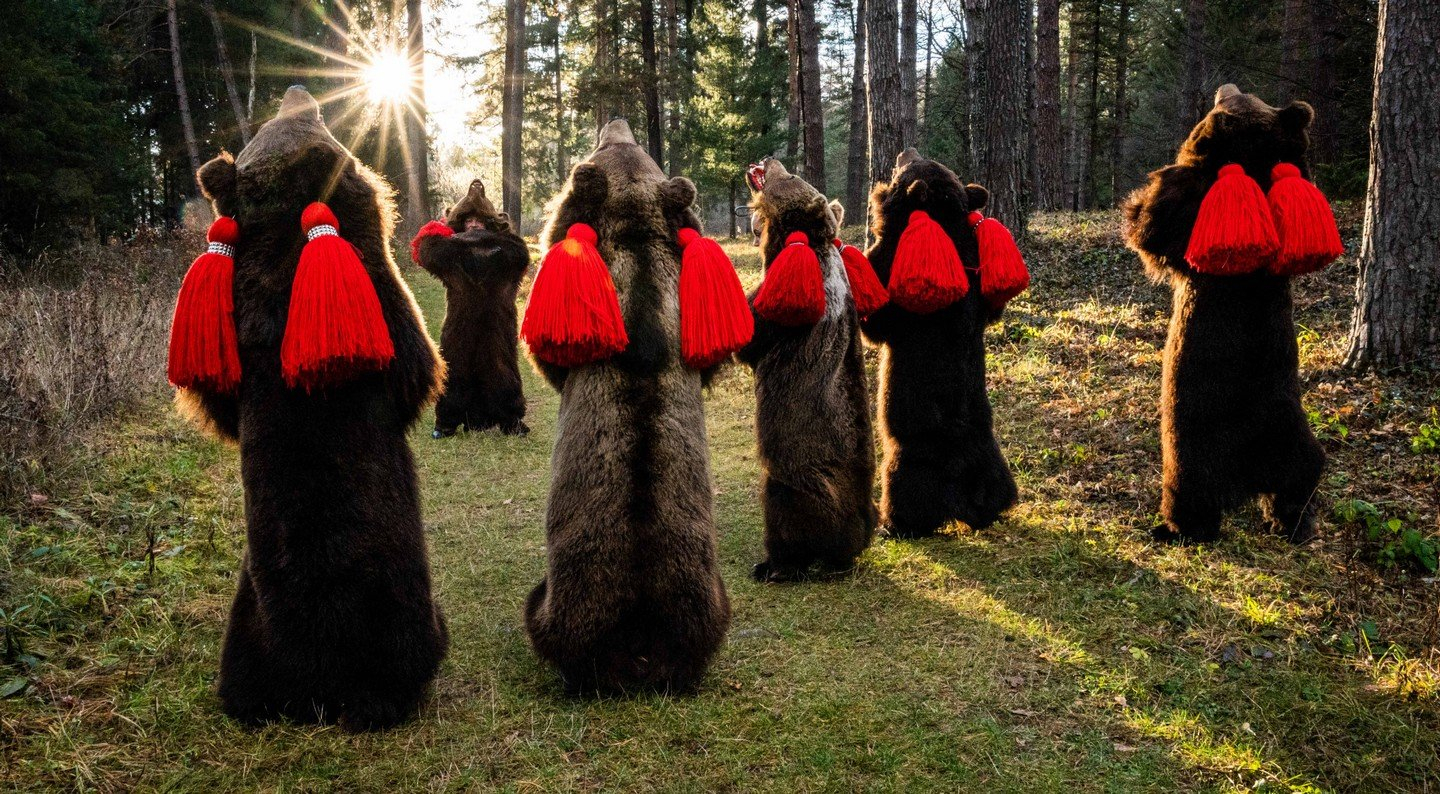In the heart of Romania, where the Carpathian Mountains cradle ancient tales and traditions, a mesmerizing spectacle unfolds annually—a dance that transcends time, blending the echoes of ancestral rituals with the pulsating rhythms of modern life. The Dance of the Bear, a vibrant fusion of culture and spirituality, draws you into a world where traditions stretch back through the ages, intertwining the past and present in a rhythmic celebration.
Imagine the scene: men adorned in the majestic pelts of bears, their movements a seamless dance guided by the haunting melodies of pan flutes and the primal beats of drums. This is not merely a performance; it is a living tradition, a connection to Romania's rich cultural tapestry that weaves through the annals of time.
The Dance of the Bear is more than a colorful display. It's a time-honored tradition deeply ingrained in Romania's cultural heritage. Clad in ancestral bear skins, men come together to perform a dance believed to banish malevolent spirits and usher in the promise of a new year. This ancient ritual becomes a bridge between the seen and the unseen, a dance that seeks to harmonize the forces of the spiritual and the earthly.
As an annual event, the Dance of the Bear often coincides with the beginning of a new year. It serves as a joyous and festive ushering in of fresh beginnings, with the bear symbolizing strength, resilience, and the untamed spirit of nature.
Beyond the captivating spectacle lies a deeper significance. The Dance of the Bear is a reflection of Romania's enduring cultural connection—a living testament to the beliefs and customs passed down through generations. It's a vibrant expression of the profound ties between the people of Romania and the land they call home.
Central to this tradition is the bear, an emblematic figure deeply rooted in Romanian folklore. The men don bear skins not merely as costumes but as a symbolic gesture, a transient merging with the spirit of the bear. The bears themselves, in their majestic presence, become willing partners in this ritual, adding an element of awe and reverence to the dance.
The bear skins worn during the dance are not mere costumes; they are relics of a bygone era. Passed down through generations, these attires carry the weight of history, connecting the performers to their ancestors. Each step in the dance becomes a tribute to the legacy of those who came before, a way to honor the ancient bear tamers and singers whose spirits echo in the haunting melodies.
Contrary to the common perception of bears being endangered, Romania boasts a thriving bear population. The Dance of the Bear takes on a unique significance in a landscape where these majestic creatures coexist harmoniously with the people. It becomes a celebration not only of human traditions but also of the interconnectedness between humans and nature.
As you immerse yourself in the Dance of the Bear, you become a witness to Romania's living history. Beyond the rhythmic movements and the primal beats of drums lies a cultural treasure—a celebration of traditions, a testament to the enduring connection between the people, the bears, and the land. In Romania, the Dance of the Bear is more than a ritual; it's a symphony of heritage and harmony, a dance that resonates across the mountains, echoing the spirit of a nation deeply rooted in its past yet dancing into the future.
